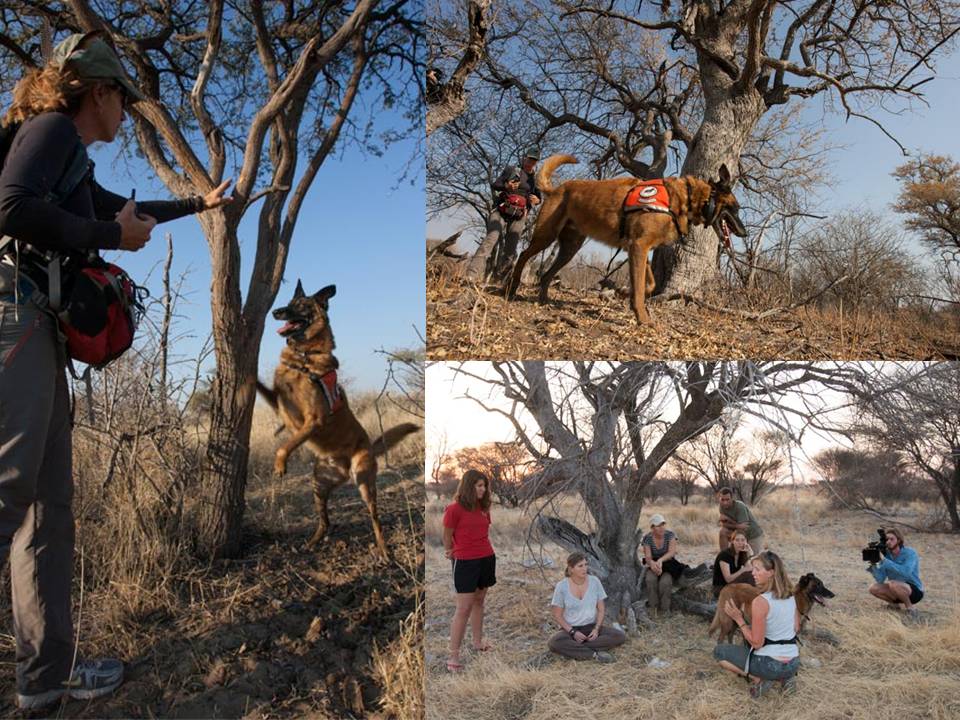Along with the detection dog survey, concurrent methods were also utilised to provide other methods of population assessment and allow a comparative study of each method. Experienced San trackers were used to locate scats in the same general areas as the detection dog team transects. In addition a motion camera survey took place over the same area.
In the Ghanzi farmlands, the detection dog was not able to perform as expected due to the challenges of the environment. The region is characterised by heavily bush-encroached thorn due to cattle grazing management. This extremely thick bush coupled with the heat resulted in less distance being covered than estimated, as the handler and human portion of the team struggled to move through the bush and remain visual contact with the dog. While the dog found cheetah signs and several scats, the number of scats found and the difficult environment demonstrated this method is not appropriate for our Kalahari acacia bush environment. In contrast, the camera traps identified several cheetahs at each study area. The trackers were also extremely effective and found between 1 - 6 scats per search day. However, the dog performed much better in the more open environment of Liuwa Plains in Zambia. Therefore, initial findings indicate that the use of scat detection dogs to locate scats of cheetah and wild dog for population analysis has potential in open environments but is limited in thick, thorn encroached areas. However, in such areas there is great potential for the use of indigenous San trackers and motion camera studies to develop population estimates. This pilot project has contributed significantly to the development of ideal methods to produce estimates of cheetah and wild dog population densities In Southern Africa.


 RSS Feed
RSS Feed
